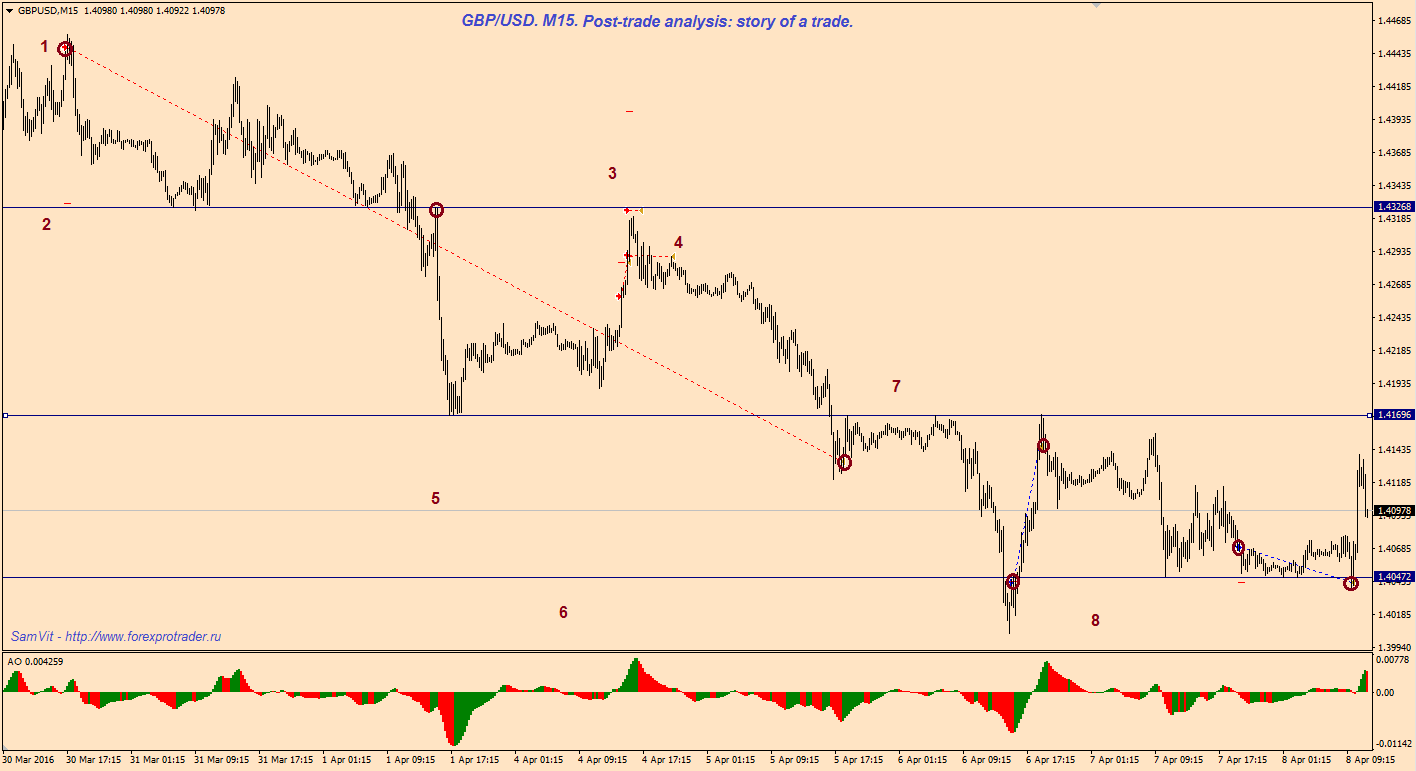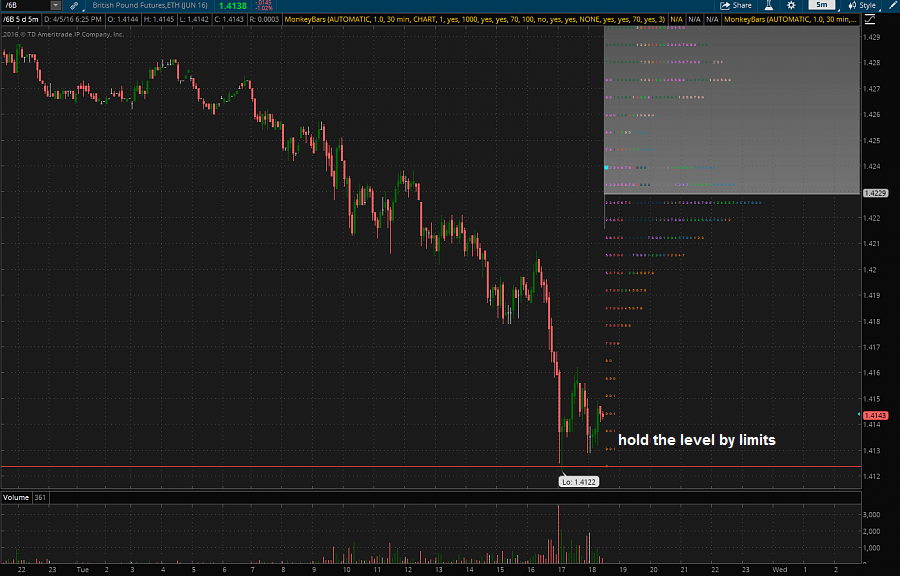Dear friends, I always repeat that to become a professional trader, you should analyze your deals to find mistakes and learn from them. Today, I am going to look in detail at a movement of GBP/USD, a rather popular currency pair, during the period from March 30 to April 8, 2016. All comments are numbered and put on the chart.
1. On March 30, during a re-test of the extreme point, taking into account a bullish divergence, I decided to open a sell deal with the target levels of 1.4060 and 1.3850. The order was put into the breakeven zone after the price hit a new low at the level of 1.4377.
2. The pair was consolidating during two days. However, it broke the support level of 1.4327 under bearish pressure. Stop loss was put into the positive area after a successful test of the support level to the upside.
3. In the supposed 4th wave, at the time of a rebound from the key levels of the Fibonacci grid, I opened additional sell deals. As we can see,the decision to open these orders was premature as a rebound occurred in the five-minute time frame. Unfortunately, the price lacked several pips to hit the limit order placed under the 61.8% Fibonacci level and functioning as the price pivot zone around 1.4327.
4. I placed additional sell deals into the breakeven zone before the price lost 300 pips.
5. The deal was closed correctly from a technical point of view: the price was on the 5th wave, there were large volumes at the bottom, and buyers resumed buying of the pair using limit orders. The price could have made a deep correction.
6. Only the following day, the price managed to reach a fresh low. Besides, stop orders were executed under the strong support level of 1.4050. Big buyers appeared in the market and started re-purchasing the pound. Looking to see a false breakout, I joined the bulls.
7. As it had been expected, the pair consolidated above the support level of 1.4050 and moved towards the resistance level of 1.4170. The trader closed the order with a profit of 100 pips after a rebound from the resistance level.
8. During a re-test of the support level at 1.4050 and formation of the Pin Bar reversal pattern, the trader opened a buy order with a rather short stop loss at 1.4042. The price started moving in the anticipated direction after breaking the support level by several pips.
Conclusion.
A psychological aspect plays a very important role in trading. If you are afraid of missing a good entry point, you are likely to open chaotic deals and suffer losses.
Besides, there is a time frame conflict. If you open an order in small time frames, stop loss should correspond to them. For example, you cannot enter the market using candlestick patterns formed in TF M5 and set stop loss in TF H1.
You should also put a deal in the breakeven zone only after a break of the nearest support level and consolidation under it.
Your comments are most welcome. 








